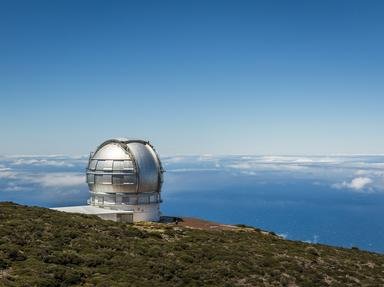Quiz Answer Key and Fun Facts
1. Born ca. 276 BCE, in Cyrene, my first Pangalactic Sunny Challenger was also a mathematician, poet, music theorist and, maybe more than anything else, a geographer. Most people today would not necessarily remember him as a great map-maker, but shortly before his death in 194 BCE, he created an amazingly accurate map of the entire world known at the time. What was his name?
2. While the name of our next challenger is well-known and his contributions to astronomy are undisputed, the thing that might come to mind first when hearing about him is a famous injury he sustained in a duel at age 20. Born in 1546 in Denmark, he was a keen observer and built several high precision quadrants - instruments to measure the vertical position of celestial bodies. Who was this man?
3. Our next stellar mind belonged to a German born in 1571. His greatest discovery was an important basis for several 17th century physicists, but his contemporaries rather considered the Rudolphine tables - an unprecedentedly precise star chart and table - his most important contribution to science. Who was this astronomer, mathematician and astrologer?
4. Regarded by many as the most important astronomer of all time, this man (born 1564 in Pisa, Italy) was also a pangalactic mind. His work includes such diverse topics as one of the earliest thermometers, discoveries on pendulum physics and on the weight of air. In astronomy, he was the first to observe and explain the phases of Venus - but who was this man whose revolutionary scientific work was "rewarded" with lifelong house arrest?
5. Our next pangalactic mind (1642-1727) is not usually categorized as an astronomer, but rather as a physicist and mathematician. Yet, his work was one of the most influential contributions to astronomy ever made - and constituted the final proof needed to confirm the heliocentric model, almost two hundred years after it was first postulated. Who was this influential person, who also served as Warden of the Royal Mint and president of the Royal Society?
6. Our sixth sunny challenger was born in Hanover, Germany, in 1738, but is usually considered an English astronomer because he moved there at age 19 and did all his work there. His career began as a musician; this raised his interest in mathematics and only from there, he discovered astronomy for himself. Most of his life was dedicated to improving telescopes, but, like many pioneers in science, he became famous for an entirely different discovery that shattered a belief held since antiquity - but who was he?
7. The name of our next pangalactic mind is often used synonymously with "genius" and like one previous candidate, one would not immediately describe him as an astronomer although his work shaped the field like few others. He was born 1879 in Germany but mostly lived and worked in Switzerland and the United States. He received the Nobel prize for physics in 1921 for work on the photoelectric effect. His most famous postulate is often summarized in just five characters - but who was he?
8. Born in 1889, our next sunny challenger's name is known to almost everyone today because of an important astronomical instrument named after him, but this instrument was only put into service 37 years after his 1953 death. He was the first to discover the true nature of the phenomena that were, at that time, called spiral nebulae - but actually had very little in common with the nebulae that existed in our galaxy. Who was this man whose work shattered our view of the cosmos in the early 1920s?
9. Born in 1934, our penultimate pangalactic challenger was a prolific researcher in the field of astronomy. His research produced important knowledge about Venus and about the possibility of extraterrestrial life, but his name will forever and foremost be associated with the 1980 television series that helped made astronomy the popular science it is today. Who was this influential challenger without whom we'd not have SETI as it exists today?
10. Our last pangalactic mind, and the only one still alive in 2014, is a true survivor considering he has endured a crippling and usually quickly fatal disease for more than five decades. He claims credit to making some of the most complex concepts of modern cosmology understandable to the interested public. As a researcher, his main contribution to our cosmic view is the unification of two main theories into a consistent whole. Who is this most unusual person?
Source: Author
WesleyCrusher
This quiz was reviewed by FunTrivia editor
bloomsby before going online.
Any errors found in FunTrivia content are routinely corrected through our feedback system.
